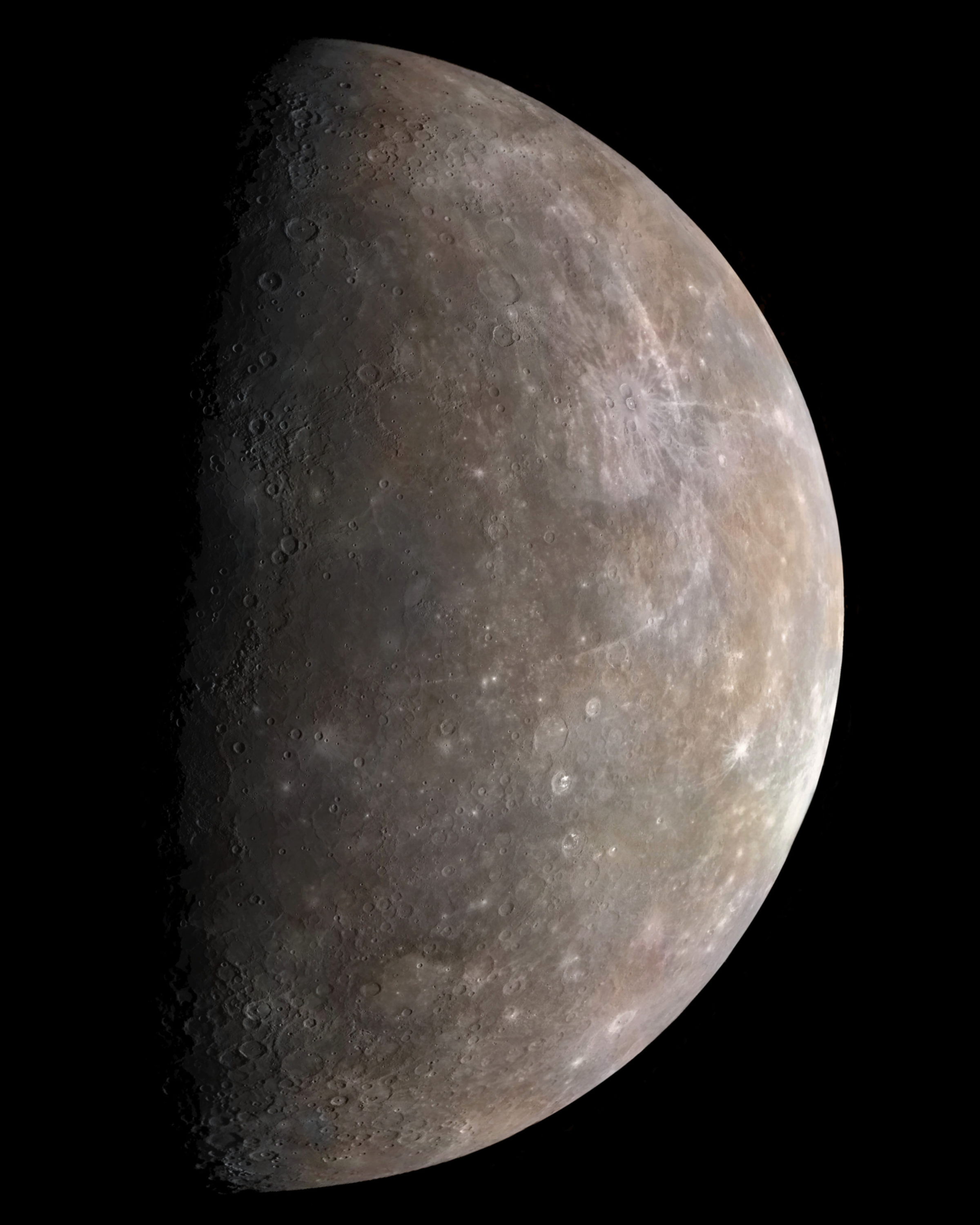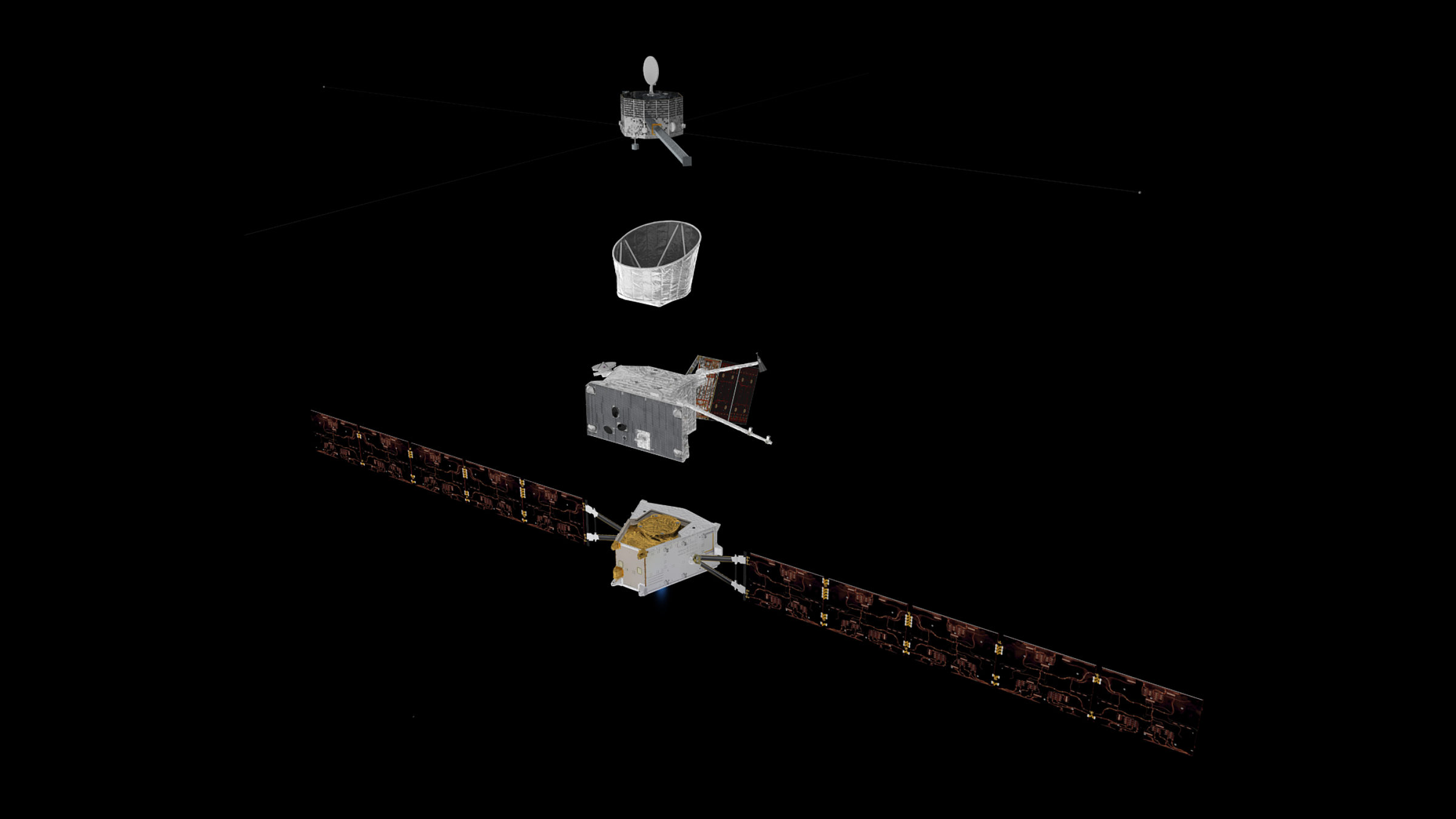Jason Davis • Jul 14, 2017
Back to Mercury! Europe and Japan's BepiColombo mission moves closer to launch
Sending a spacecraft to Mercury is hard.
First of all, it gets pretty hot that close to the Sun—about 430 degrees Celsius—which is bad for a space robot's electronics.
Secondly, it's hard to get there. Any spacecraft visiting Mercury has to shed a huge amount of energy as it spirals in towards the Sun to match Mercury's orbital trajectory.
In the 1960s, as NASA prepared to launch humanity's first mission to Mercury, an Italian mathematician-engineer named Giuseppe "Bepi" Colombo proposed a way for a spacecraft to enter a 176-day orbit around the Sun—double the orbital period of Mercury. This allowed the mission, Mariner 10, to successfully fly past Mercury three times in 1974 and 1975.
Mercury then remained unexplored for three-and-a-half decades, until NASA's MESSENGER probe arrived for a four-year stay in 2011.
Now, we're going back. Next year, Europe and Japan are sending a pair of spacecraft to Mercury in hopes of answering outstanding questions about our innermost planet, as well as the formation of the solar system. The mission is named BepiColombo, in honor of the person who helped make the initial reconnaissance of Mercury possible, and it just took another step next year's October 2018 launch.

Why go back?
Despite the Mariner 10 and MESSENGER missions, Mercury remains the least explored planet in the inner solar system.
Mariner 10 only revealed one side of the planet during its flybys, and later, MESSENGER produced global maps, providing new insights into a big Mercurian mystery: hollows.
Mercury's hollows are irregular, sunken surface regions that don't match any known geological landforms. Hollows tend to be crater-free, indicating they are young, and possibly still forming. Mariner 10 first spotted the hollows, but it wasn't until MESSENGER that scientists were able to get an up-close look. There are several theories on their formation, but MESSENGER didn't get enough information to solve the mystery.
Mercury is also shrinking as its core continues cooling. The planet also has an extremely thin atmosphere—technically, an exosphere—and during the MESSENGER mission, scientists were astonished to discover it contained water. The exosphere also contains sodium, potassium, calcium, and magnesium, but not in the expected amounts, said Alvaro Giménez, the European Space Agency's director of science, during a recent press conference.
"The ratio of those volatiles [in the exopshere] is too high for the current position of Mercury in the solar system," he said. "So either our theories about volatiles need to be corrected, or maybe Mercury formed somewhere further out in the solar system."

Getting there
BepiColombo consists of two spacecraft: the Mercury Planetary Orbiter, or MPO, and the Mercury Magnetospheric Orbiter, or MMO. The MPO is built by the European Space Agency and the MMO is built by the Japanese Aerospace Exploration Agency. The full spacecraft stack also includes a sunshield and a solar-electric propulsion module to help the two probes make their 7-year journey to Mercury.
On July 6, ESA announced BepiColombo had completed integrated testing as a combined unit. That testing include acoustic and vibration trials to make sure the spacecraft would survive the launch of Europe's most powerful rocket: the Ariane 5.
BepiColombo's trip to Mercury will be quite dizzying. In addition to using its transfer module for orbital adjustments, the spacecraft will pick up one gravity assist from Earth, two from Venus, and six from Mercury itself before it finally enters orbit in 2025.
This wild ride is better visualized than explained:
BepiColombo's journey to Mercury Video: ESA
At Mercury, the MPO and MMO will pop apart and head for separate polar orbits. The MMO will end up in an elongated, 590-by-11,700-kilometer orbit, where it can explore the overall Mercury space environment, including the planet's weak magnetic field. The MPO will dive much closer, obtaining close-range images of the surface from a 480-by-1500-kilometer orbit (almost as close as the International Space Station is to Earth).
Ready for science
The MPO and MMO are armed with an impressive suite of science instruments.
The MMO has magnetometers, two plasma experiments, an atmospheric spectral imager, and a dust monitor. Its counterpart craft, the MPO, is equipped with a laser altimeter, an accelerometer, radio and magnetic field experiments, a particle analyzer, and multiple spectrometers and imagers covering portions of the electromagnetic spectrum from radio to gamma waves.
All of this science isn't coming cheap; many of the spacecraft components were developed specifically for this mission, leading to a cost estimate of about $1.9 billion. That places BepiColombo in the price range of a NASA flagship-class mission. ESA officials are calling the Mercury expedition the most complicated science mission they've ever attempted.
After completing integrated testing in the Netherlands, the MPO and MMO are set to be de-integrated for more individual tests, which are expected to wrap up by March. The probes will then be shipped to French Guiana for integration aboard their Ariane 5 carrier rocket.
By the time BepiColombo arrives at Mercury, it will have been 10 years since MESSENGER finally ran out of fuel and impacted the planet's surface. The new orbiters will have a primary mission of one year, with the option to extend operations into at least a second year.


 Explore Worlds
Explore Worlds Find Life
Find Life Defend Earth
Defend Earth


